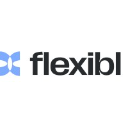Revenue Growth Management software: purchase guide
What is Revenue Growth Management?
Revenue Growth Management (RGM) is a strategic discipline that enables companies to maximize their revenue by aligning pricing, promotions, product assortment, and customer segmentation with real-time market dynamics. It’s not just about selling more—it’s about selling smarter, improving profitability per customer, and making data-driven decisions across every revenue lever.
Unlike traditional approaches that rely heavily on static historical data or gut instinct, RGM integrates advanced analytics, behavioral modeling, and automation to help businesses react faster and operate more efficiently in complex markets.
Why RGM Is Mission-Critical in 2025
In 2025, businesses are navigating one of the most complex commercial environments in recent memory. Margins are under constant pressure from inflation, operational costs are rising, and consumer expectations are both higher and harder to predict. Traditional approaches to pricing and revenue planning—often reactive and spreadsheet-based—are no longer sustainable.
This is where Revenue Growth Management moves from optional to essential. It empowers organizations to make faster, smarter, and more profitable decisions in a dynamic market. Here's how:
Adaptive Pricing in Volatile Markets
The days of annual price reviews are over. With supply chain disruptions, fluctuating input costs, and hyper-responsive competitors, companies need the ability to adjust prices in real time. RGM platforms ingest external data (like competitor pricing or market demand) and internal signals (like stock levels or channel performance) to optimize prices dynamically.
Example: A consumer electronics brand uses RGM to instantly lower prices in regions where competitors launch discounts, while maintaining margins elsewhere.
Higher Return on Promotional Spend
Promotions remain a critical lever for growth, but without proper control, they erode margin. RGM software helps teams simulate promotional scenarios in advance, segment responses by customer type, and measure true incremental impact—not just top-line lift.
Result: Businesses stop over-relying on blanket discounts and focus their investment where it drives measurable returns.
Example: A food manufacturer shifts from mass discounts to retailer-specific promotions that deliver 3x higher ROI, guided by past performance insights.
Precision in Customer Targeting
RGM brings together transactional data, behavioral insights, and price sensitivity analysis to enable micro-segmentation. This allows businesses to personalize pricing, bundles, and incentives by geography, customer lifetime value, or behavioral patterns.
Example: A SaaS platform offers customized upgrade incentives to power users with high retention risk, improving upsell rates by 12%.
Forecasting with Confidence
Planning cycles are shorter, but the stakes are higher. RGM tools combine predictive analytics with real-time market intelligence to deliver rolling forecasts that update as conditions change. This improves coordination between sales, marketing, finance, and supply chain teams.
Example: A fashion retailer forecasts Q3 revenue 10% more accurately after factoring in real-time shifts in consumer demand and regional trends.
Automation at Scale
Manual revenue planning is slow, error-prone, and hard to scale. RGM platforms automate pricing approvals, revenue reports, promotion setup, and exception alerts—freeing up strategic bandwidth and accelerating go-to-market execution.
Example: A global CPG company reduces revenue planning cycles from 3 weeks to 3 days after implementing automated workflows across its markets.
Core Capabilities of RGM Software
A strong RGM platform isn’t just a reporting tool—it’s a decision engine. The best solutions combine automation, analytics, and strategic modeling to help businesses move from reactive decisions to proactive revenue control. Below are the core capabilities to look for—and why they matter in practice.
Dynamic Pricing Optimization
RGM software allows businesses to set prices that reflect real-time market realities, not outdated assumptions. These tools factor in demand elasticity, competitive pricing, product availability, and even regional market nuances to recommend or apply optimal price points.
What it changes: You no longer need to wait for quarterly meetings to react to market shifts. Dynamic pricing lets you protect margins while remaining competitive, even during sudden demand spikes or cost increases.
Example: A global airline uses RGM to dynamically adjust fares based on seat availability, booking trends, and competitor pricing—boosting revenue per seat by 7%.
Trade Promotion Management
This feature goes far beyond calendar-based promo planning. RGM systems enable cross-functional teams to simulate, deploy, and measure promotions based on historical data, consumer response, and forecasted lift.
What it changes: You can now shift from “set-and-forget” promotions to ones that are data-informed, targeted, and optimized for profitability.
Example: A CPG brand reallocates its promotional spend from national TV ads to regional discounting, based on store-level sales impact tracked via RGM.
Predictive Sales Forecasting
Accurate forecasting is essential for aligning supply, marketing, and finance. RGM platforms use machine learning models that incorporate seasonality, macroeconomic factors, past sales behavior, and even real-time campaign performance to project future revenue.
What it changes: Forecasts become rolling, dynamic, and scenario-based—enabling better planning and faster pivots.
Example: A subscription software provider uses RGM forecasting to anticipate renewal dips in one region and launches a targeted retention offer two months early.
Customer and Channel Analytics
RGM tools segment customers not only by volume or demographics, but also by profitability, churn risk, and promotion responsiveness. On the channel side, they help uncover which distribution paths yield the highest contribution margin or cannibalize others.
What it changes: You can invest resources where they generate the most impact, from price-sensitive customer segments to high-margin distribution channels.
Example: A beauty brand identifies that a mid-tier channel drives higher lifetime value than its flagship store—prompting a shift in product bundling and channel-specific promotions.
ERP, CRM, and Payment System Integration
A modern RGM platform doesn’t live in a silo. It integrates with your existing tech stack—ERP for inventory and finance, CRM for sales behavior, and payment systems for real-time transaction data.
What it changes: You get a unified revenue picture that aligns departments and eliminates manual data stitching.
Example: A retailer syncs its POS, eCommerce, and ERP systems through RGM, enabling end-to-end margin tracking across channels and SKUs.
Automated Reporting and Revenue Dashboards
Gone are the days of monthly spreadsheet reviews. RGM tools deliver live dashboards, automated alerts, and drill-down analytics by region, product, customer, or campaign.
What it changes: Decision-makers no longer rely on lagging indicators—they get real-time insights to take immediate action.
Example: A telecom operator spots a dip in prepaid revenue in one city and deploys a localized offer the same day, informed by real-time dashboard alerts.
Comparison: The Leading Revenue Growth Management Software in 2025
| Software |
Key Features |
Strengths |
Limitations |
Pricing & Availability |
| Mostro.xyz |
Revenue monetization tailored to the music industry |
Built for creators; supports fan-based monetization |
Not suitable beyond the entertainment sector |
Free version available, pricing on request, Fall 2024 launch |
| Givemefive |
B2B subscription pricing optimization |
Robust analytics; ideal for SaaS and recurring models |
Lacks features for retail and omnichannel use |
Freemium model, pricing on request, trial available |
| Circle Engage |
AI revenue tools for healthcare |
Strong in patient segmentation and engagement |
Narrow use case; healthcare-focused |
Free version available, tiered pricing for clinics/networks |
| Flexibl |
Transforms payment data into growth intelligence |
Advanced analytics; tight integration with payment stacks |
Requires robust data infrastructure |
Free plan available, pricing on request, demo offered |
| Vividly |
Revenue tracking for creative project teams |
Good for marketing and agency use cases |
Not built for traditional finance or ERP systems |
4.7/5 reviews, free plan, pricing on request |
| Trade Promotion Master |
Trade promotion planning and ROI tracking |
High precision in promotion optimization |
Limited outside trade/promo contexts |
5.0/5 reviews, free trial, enterprise pricing available |
| Red Points |
Revenue protection via brand and IP monitoring |
Excellent for anti-counterfeiting and gray market issues |
Less focused on revenue enablement or optimization |
Free version, trial offered, quote-based pricing |
How to Choose the Right RGM Platform
Selecting a Revenue Growth Management solution isn’t just a tech decision—it’s a strategic investment. To get it right, you need to align your choice with your business model, industry dynamics, data ecosystem, and internal capabilities.
Here’s how to approach the decision, step by step.
1. Start with Strategic Fit
Ask yourself:
Do we sell via subscriptions, transactions, usage, or a mix of models?
Are we focused on volume, margin, retention—or all three?
Implementation Tip:
Look for platforms that offer revenue model templates relevant to your business. For example, a B2B SaaS company should prioritize features like cohort-based churn analysis, dynamic renewal pricing, and lifecycle segmentation—not just SKU-level price tracking.
2. Prioritize Industry-Specific Capabilities
Ask yourself:
Are we operating in a highly regulated or high-churn sector?
Do we rely heavily on promotions, channel partners, or price elasticity?
Implementation Tip:
Shortlist platforms that have clients in your industry and request case studies or demos that show how the tool solves problems similar to yours.
For example: If you're in CPG or retail, make sure trade promotion management and cannibalization tracking are built-in—not add-ons.
3. Evaluate Speed to Deployment
Ask yourself:
Implementation Tip:
If time-to-value is critical, look for pre-configured dashboards, pre-built data connectors, and industry-specific logic. Request a 30-60-90 day implementation roadmap from vendors to understand deployment effort and risks.
4. Check Integration Capabilities
Ask yourself:
Can this tool sync seamlessly with our existing CRM, ERP, billing, and BI tools?
Do we need real-time syncing or batch updates?
Implementation Tip:
Create a short list of “must-connect” platforms (e.g., Salesforce, SAP, Stripe, NetSuite). Share this list with vendors and ask for live demonstrations of integrations—not just claims in documentation. Also check if the platform supports your data architecture (cloud-native, on-premise, hybrid).
5. Don’t Overlook Governance and Transparency
Ask yourself:
Who will be managing pricing and promotional rules?
Do we need audit logs, approval workflows, or multi-country compliance features?
Implementation Tip:
For any company in finance, healthcare, or multinational operations, governance isn’t optional. Ensure the platform has role-based access, version tracking, audit trails, and regulatory compliance features (e.g., GDPR, SOX, HIPAA depending on your industry).
Emerging Trends in Revenue Growth Management (2025 and Beyond)
As companies continue to mature their revenue strategy, RGM tools are evolving fast. Here’s what to expect:
Predictive and Prescriptive Analytics
Next-gen RGM software won’t just forecast revenue—it will suggest (and in some cases, automate) the best course of action.
Real-Time Decision Support
Live dashboards will power revenue decisions on the fly, enabling businesses to adjust tactics in real time rather than after the fact.
Cross-Functional Adoption
RGM is moving beyond pricing or finance departments—marketing, product, and sales teams now actively use these insights to drive decisions.
Security-First Revenue Management
With growing regulatory pressure, expect embedded compliance, data encryption, and fine-grained access controls across all top-tier platforms.
Conclusion
Revenue Growth Management is no longer optional—it’s a strategic necessity. As businesses face rising costs and changing buyer behaviors, the ability to optimize pricing, refine promotions, and personalize offers at scale has become a decisive competitive advantage.
By investing in the right RGM software, companies unlock a new layer of revenue intelligence—one that drives profitable growth, not just top-line expansion. Use this guide to evaluate your options, align on strategy, and move confidently into the next phase of your revenue journey.
FAQ: Revenue Growth Management
What is Revenue Growth Management (RGM)?
A data-driven approach to optimizing pricing, promotions, and product strategies to increase both revenue and profitability.
Who needs RGM software?
Businesses in SaaS, retail, CPG, healthcare, or any sector where pricing and promotions are key to revenue performance.
How does AI enhance RGM?
AI improves forecasting, identifies high-value segments, simulates pricing scenarios, and automates pricing or promotional decisions.
Is RGM only for large enterprises?
No. Many solutions now offer modular, scalable tools suitable for SMBs and growing mid-market businesses.
What kind of ROI can I expect?
Organizations implementing RGM software typically report 5–15% increases in net revenue and significant improvements in promotional ROI and forecasting accuracy.






